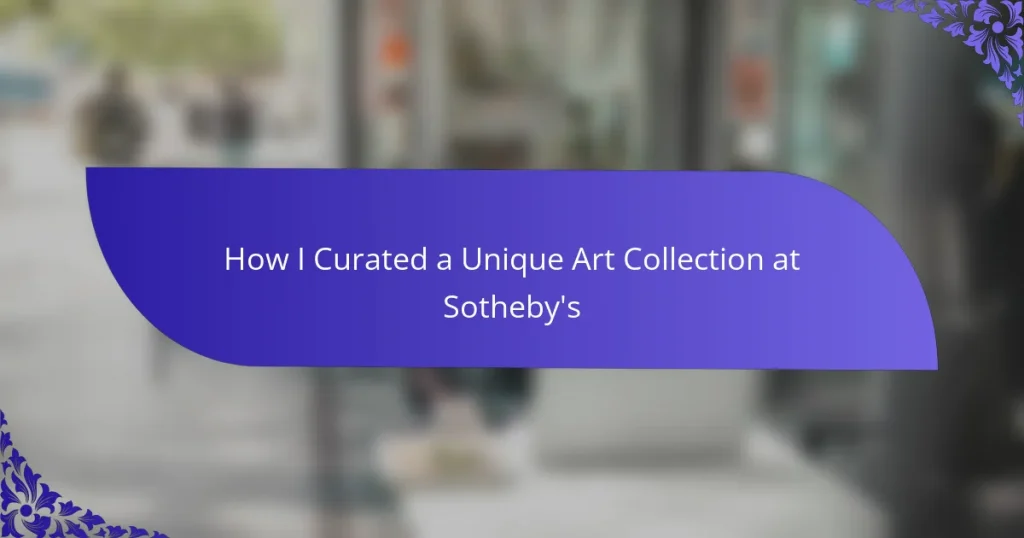Key takeaways
- Luxury art collections reflect personal narratives, emphasizing emotional connections over monetary value.
- Building a collection is a thoughtful journey influenced by intuition, research, and personal experiences.
- Managing risk in art investment involves diversity, thorough research, and proper insurance to ensure security.
- Proper display and environmental control are essential for preserving artwork, enhancing their beauty and story.
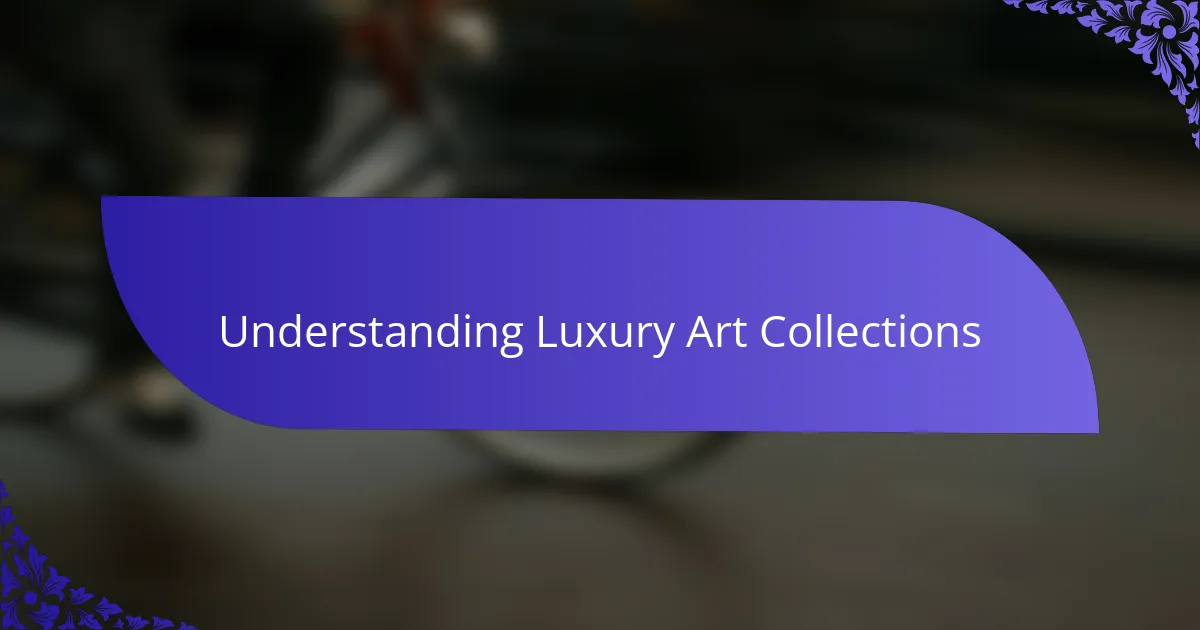
Understanding Luxury Art Collections
Luxury art collections are more than just displays of wealth; they are deeply personal narratives that reflect an individual’s tastes, experiences, and values. When I first began curating my collection, I realized it wasn’t about acquiring the most expensive pieces but about finding artworks that resonated with my soul and told a story I wanted to share. Have you ever felt that rush when a piece of art speaks directly to something inside you? That’s the essence of true luxury in art.
Understanding luxury art collections means recognizing that each piece is a blend of history, craftsmanship, and emotional connection. It’s not just about rarity or price tags but about how an artwork fits into the broader tapestry of your life and legacy. I’ve found that the most meaningful collections are those curated with intention, where every acquisition adds a new dimension to the overall narrative.
What sets luxury art collections apart is the intimacy and thoughtfulness behind each choice. This process requires patience, knowledge, and often, a willingness to trust one’s intuition. Personally, I’ve learned that building such a collection is a journey filled with discovery, reflection, and moments of pure joy when you finally find that perfect piece.

Exploring Sotheby’s Auction Process
Navigating Sotheby’s auction process felt like stepping into a world where history and excitement collide. The meticulous cataloging of each artwork, accompanied by detailed provenance and expert commentary, gave me confidence that every piece had a story worth discovering. Have you ever wondered what it’s like to be part of a room buzzing with anticipation as the gavel comes down? That moment is pure adrenaline for any collector.
The bidding itself is a dance of strategy and intuition. I remember weighing my options silently, gauging not just the value on paper but the emotion a piece stirred within me. Sotheby’s transparent system, from previews to live auctions, made it accessible yet thrilling—a delicate balance between calculated decisions and impulsive passion.
What surprised me most was how the process encouraged connection—not only with the art but with fellow enthusiasts and experts who share your fervor. It’s more than a transaction; it’s a shared experience that deepens your appreciation and sharpens your eye for art that truly belongs in your collection. Isn’t that what curating a unique collection is all about?

Criteria for Selecting Unique Artworks
Choosing unique artworks is like having a conversation with the piece itself. I always ask myself: Does this artwork evoke a feeling or spark a memory? When I stumbled upon a canvas that made me pause and reflect, I knew I had found something special—something beyond aesthetics or market value.
I also pay close attention to the story behind each piece. Provenance, artist background, and historical context shape the artwork’s identity. Sometimes, discovering a lesser-known artist with a powerful vision adds a layer of richness to the collection that more famous names simply can’t replicate.
Finally, I consider how each artwork will harmonize within the existing collection. Will it challenge or complement what’s already there? Striking that balance is an ongoing puzzle, but it’s this dynamic interplay that turns a group of artworks into a living, breathing narrative. Don’t you think that’s what makes a collection truly unique?
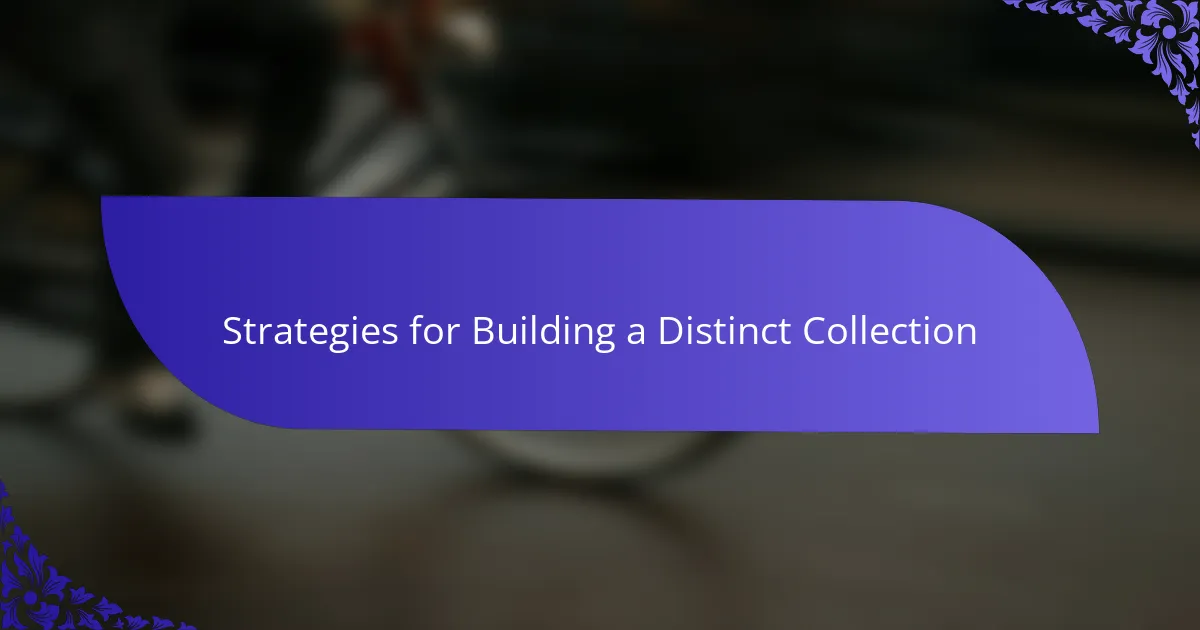
Strategies for Building a Distinct Collection
One strategy I embraced was focusing on niche themes that resonated with my personal journey. Instead of chasing mainstream trends, I sought pieces that connected with specific moments or ideas meaningful to me. Have you ever noticed how a particular subject or style keeps drawing your attention? For me, following these subtle inclinations created a collection with genuine depth.
Another approach involved balancing emerging talents with established masters. I remember feeling a thrill discovering a relatively unknown artist whose work felt fresh and bold next to a timeless classic. This blend not only diversified my collection but sparked ongoing conversations about art’s evolving landscape. Isn’t that mix what keeps a collection alive and intriguing?
Lastly, I made it a point to visit galleries, studios, and auctions frequently, allowing intuition to guide me as much as research. Many times, a chance encounter with a piece I hadn’t planned to see ended up reshaping my vision entirely. Doesn’t that serendipity make collecting feel like an adventure rather than a checklist?
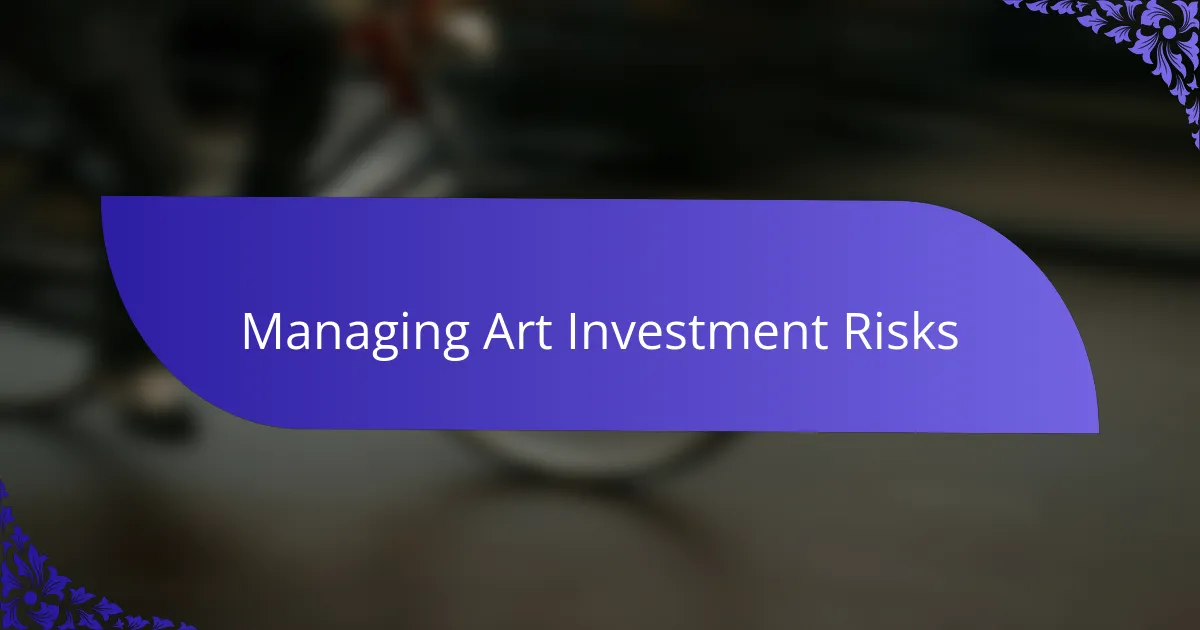
Managing Art Investment Risks
Managing the risks of art investment means balancing passion with prudence. Early in my journey, I learned that not every stunning piece will appreciate in value, so I made it a point to research an artwork’s provenance and market trends thoroughly. Have you ever hesitated before bidding because you wondered if that piece would hold its value? That caution saved me from potential pitfalls.
I also found diversity to be a crucial risk-management tool. By mixing artists, periods, and styles, I reduced exposure to market fluctuations tied to any single segment. It’s like having a financial portfolio—spreading bets doesn’t dilute the thrill but protects against unpredictable turns.
Insurance and expert appraisals became my safety nets, offering peace of mind that my collection was guarded against damage or theft. Knowing that my investments were covered allowed me to fully enjoy the art without the constant worry—wouldn’t you agree that peace of mind is essential to truly savoring luxury?

Personal Experiences with Sotheby’s Auctions
Attending my first Sotheby’s auction was an unforgettable experience—I recall the palpable tension in the room as the auctioneer’s hammer hovered above the gavel. There’s a unique thrill in watching bids fly up in real time, knowing that every decision could transform your collection forever. Have you ever felt that mix of excitement and nervousness when a piece you’ve dreamed of suddenly comes within reach?
What struck me most was how Sotheby’s creates an atmosphere that balances exclusivity with accessibility. From the well-curated previews to the knowledgeable specialists ready to share insights, I found myself immersed in a community that truly values the story behind each artwork. It wasn’t just a purchase; it was a meaningful interaction, sparking conversations that extended far beyond the auction block.
One memorable moment was when I won a youthful artist’s painting after a subtle bidding war. That feeling of triumph was layered with personal connection—I wasn’t just acquiring art; I was investing in a narrative that resonated deeply with me. Looking back, these moments are what make Sotheby’s auctions more than just transactions—they are milestones in the journey of building a collection that’s uniquely mine.
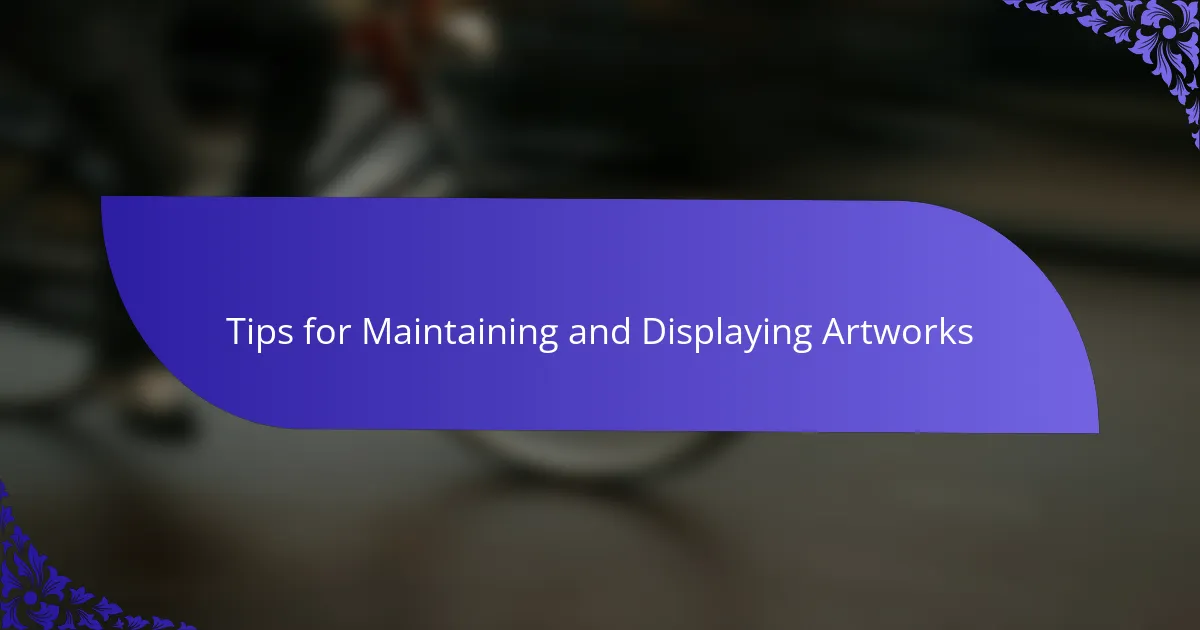
Tips for Maintaining and Displaying Artworks
Displaying my artworks in the right environment has been crucial to preserving their beauty and meaning. I’ve learned that controlling light exposure—especially avoiding direct sunlight—helps prevent fading and damage. Have you ever noticed how a painting can lose its vibrancy when left in harsh light? That subtle care makes all the difference over time.
Humidity and temperature control are another layer of protection I take very seriously. When I first saw how a sudden shift in climate impaired a delicate canvas, I instantly understood that maintaining a stable environment isn’t just about preservation—it’s about respect for the artist’s vision. Trust me, investing in the right climate equipment brings peace of mind beyond any other precaution.
Finally, how you display art speaks volumes about how you value it. I like to mix traditional frames with modern displays to create dialogue between pieces, inviting viewers to explore each work’s story. Have you ever caught yourself lingering longer because the arrangement felt just right? That’s exactly the experience I aim to create in my living space.
